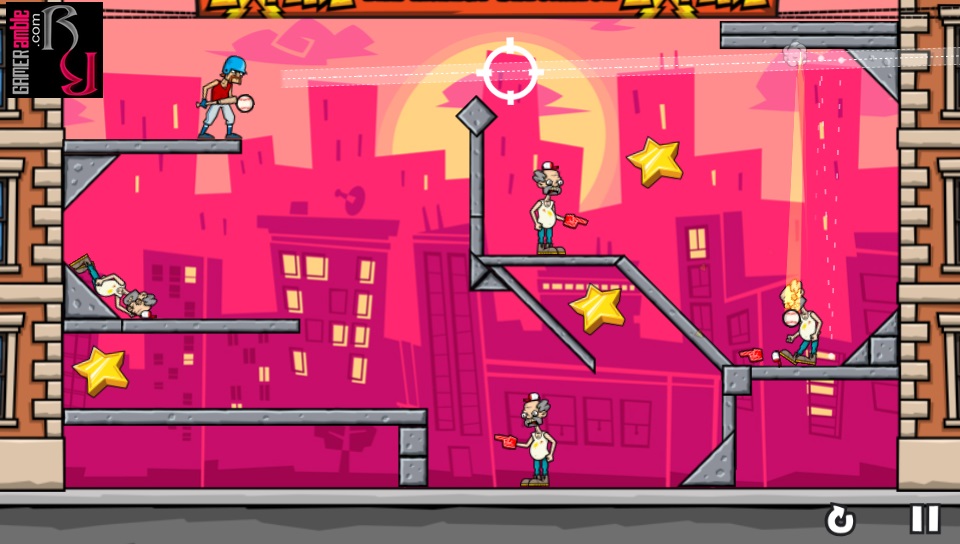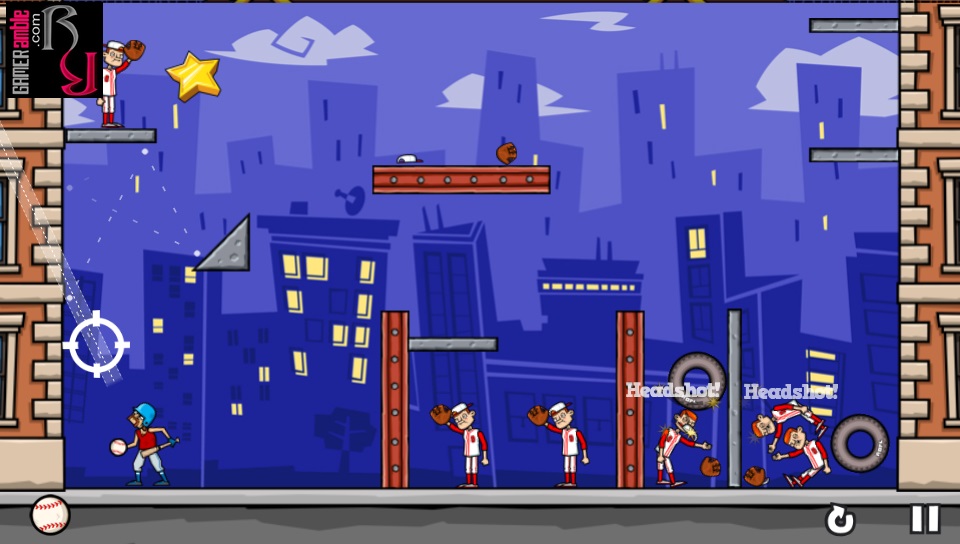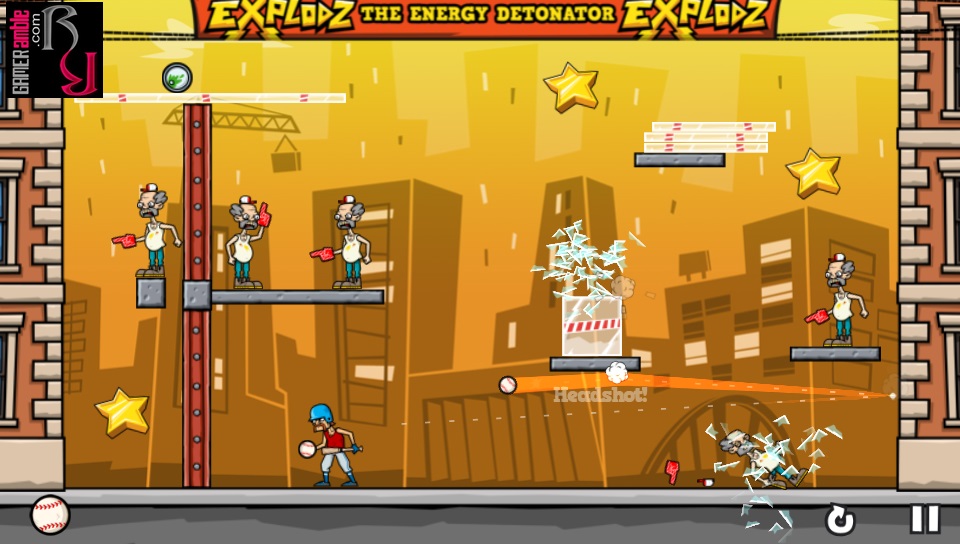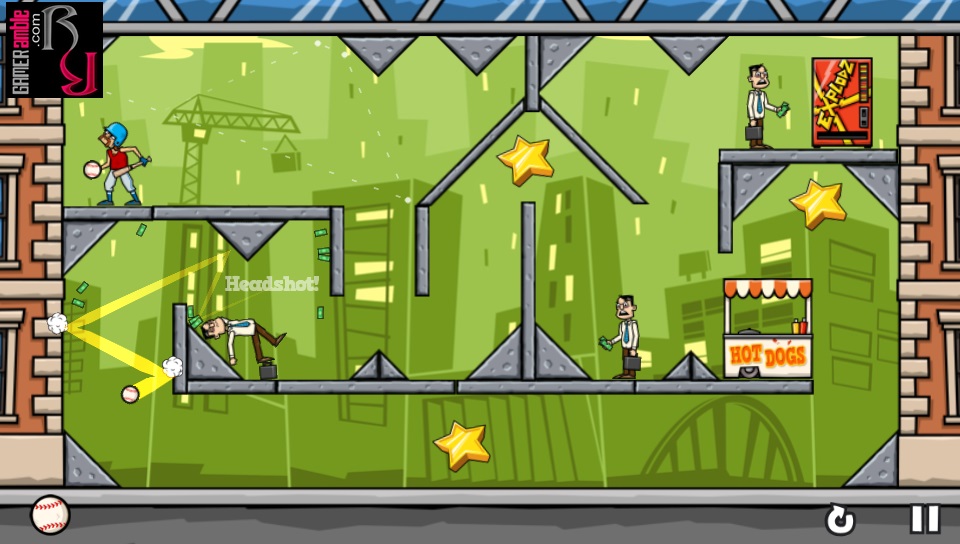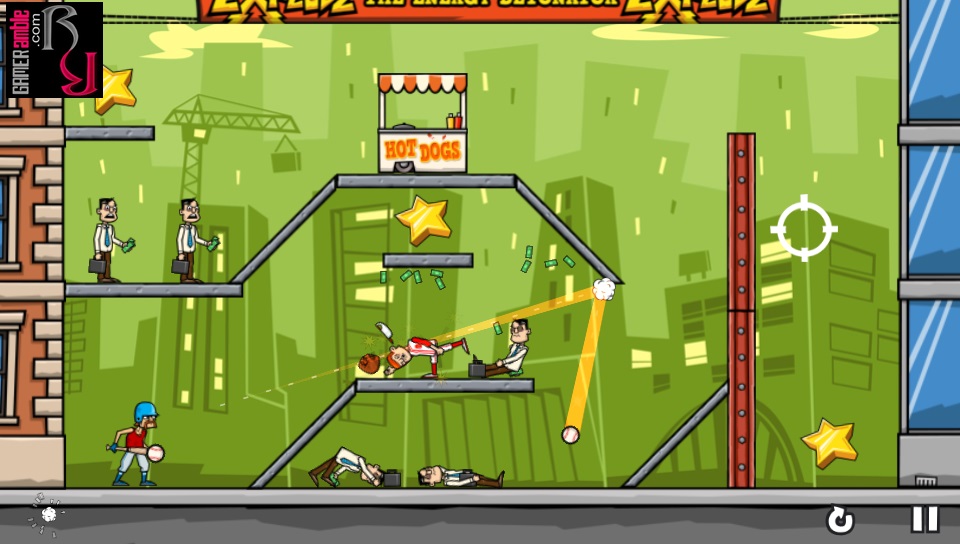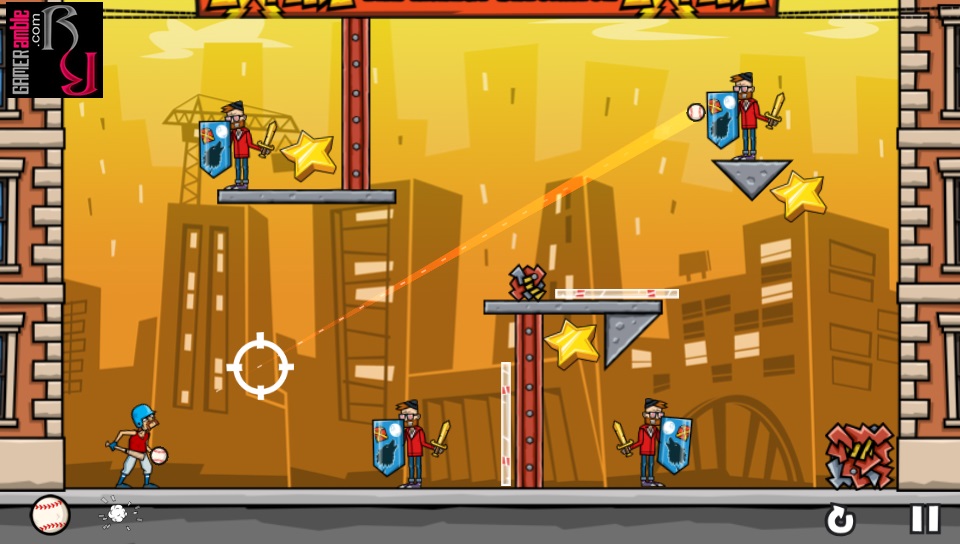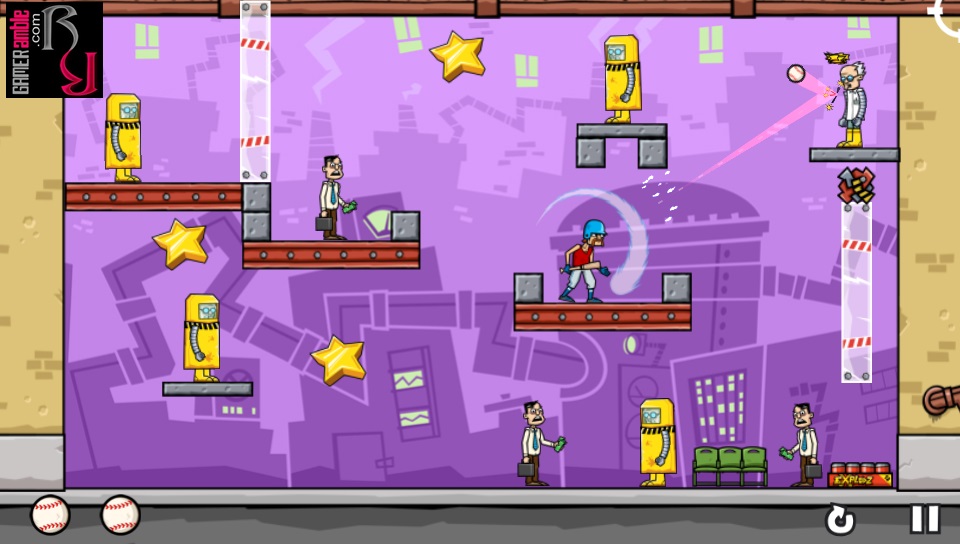Baseball Riot
Developer: 10tons Ltd | Publisher: 10tons Ltd | Release Date: 2016 | Genre: Casual / Indie / Sports | Website: Official Website | Purchase: PSN
Tennis in the Face introduced us to Pete Pagassia, the former tennis champion who went on a rampage against the energy drink manufacturer who caused his fall from grace. The game was pretty basic, but quite enjoyable and certainly not a bad way to kill some time. Baseball Riot is the sequel to Tennis in the Face, but this time the protagonist is a former baseball star, named Gabe Carpaccio. Explodz Inc., the corrupt energy drink manufacturer, is the target once again as they have corrupted Gabe’s former team members with their product. This means that Gabe is going to have to knock some sense into everyone who is involved with Explodz Inc., including obnoxious fans, catchers, and even biased umpires.
Although Baseball Riot is billed as a sequel to Tennis in the Face, it definitely feels more like a reskin than a new product. Apart from the protagonist sporting a baseball bat and ball instead of a tennis racket, the rest of the game plays out in virtually the exact same manner. It’s once again a physics based puzzle game where your object is to knock down every single enemy that is standing around the single screen levels. Your balls are limited and the enemies numerous, so ideally you have to angle your shots in such a way that they take down more than one enemy at a time. This is easy enough initially, but the game introduces new enemies for each area, including ones that wear protection that only make them vulnerable from behind as well as ones that can handle multiple hits before going down. The introduction of obstacles, such as glass and planks also make life more complicated for poor Gabe, not to mention level designs that make it impossible to get a clear shot at your enemies. However, taking down three or more enemies with one hit will reward Gabe with an extra ball and some items that appear on the levels, such as explosions and vending machines, can be very helpful.
Baseball Riot features more than 100 enemies and initially the game is quite enjoyable, albeit very similar to Tennis in the Face. About the only major difference between it and its predecessor is the fact that the three stars that you can earn are now floating around the level. This means that you need to take down your enemies as well as angle your shots in such a way that you collect the stars along the way. These stars are not essential for completing the level, but you do need a certain amount of them if you want to progress to the next area. Some fans will appreciate the extra challenge, but we suspect a lot of people will also find this new addition rather annoying.
The biggest problem with Baseball Riot is the amount of luck and precision that is required to knock down all enemies and collect all the stars per level. It sometimes feels like even the most minute adjustment to your trajectory can send the ball careening off in wildly different directions, which is not fun.
The game does show your previous trajectory on the screen, which means that you can narrow things down through some trial and error. You can also instantly restart a level with the tap of a button, which is a feature we used a lot. The amount of obstacles that litter later levels also makes things a bit more frustrating than what we would have liked.
Visually, there isn’t much to distinquish Baseball Riot from Tennis in the Face. The game uses the same bold, cartoony graphics, but most of the enemies simply feel like reskined versions of the ones in previous games. In fact, later in the game you will not just encounter some of the exact same enemies as in the first game, but some of the backgrounds are exactly the same as well. All of this combined to give us a serious sense of deja vu while playing Baseball Riot. The audio for Baseball Riot is decent enough, but once again, nothing really stands out as remarkable. The background tunes are simple and unmemorable, while the sound effects get the job done, but not much more. The controls are extremely simple and all you have to do is adjust the angle at which Gabe will hit the baseballs. This can be done using the touch screen of the Vita, the analog stick, or the D-pad. Since Gabe as well as his foes remain stationary in the same spots each time you restart a level, it can feel like later levels rely more on trial and error than skill to complete.
Overall, Baseball Riot is not a bad game, but it doesn’t really do anything to elevate it above Tennis in the Face. In fact, given the choice, we would still prefer Tennis in the Face as it felt slightly less frustrating and repetitive compared to Baseball Riot. Players who enjoyed Tennis in the Face, but found it too easy might enjoy the added challenge of Baseball Riot, but as far as sequels go, it could have been a lot better. The game is enjoyable in short bursts, but playing it for extended periods will quickly reveal its flaws.


